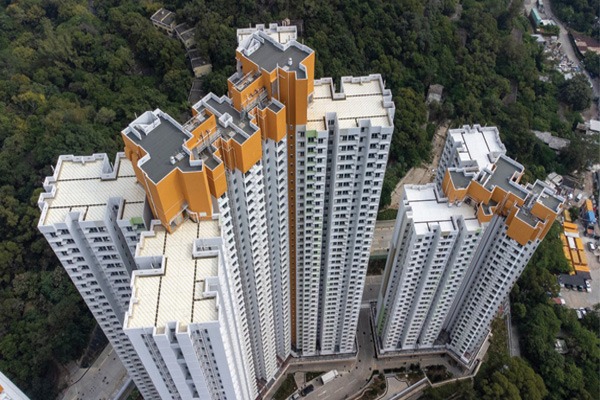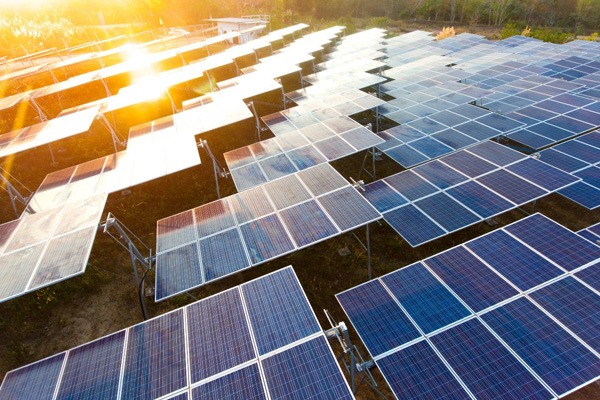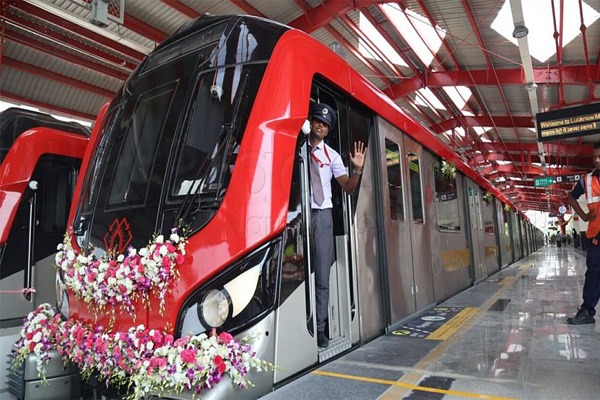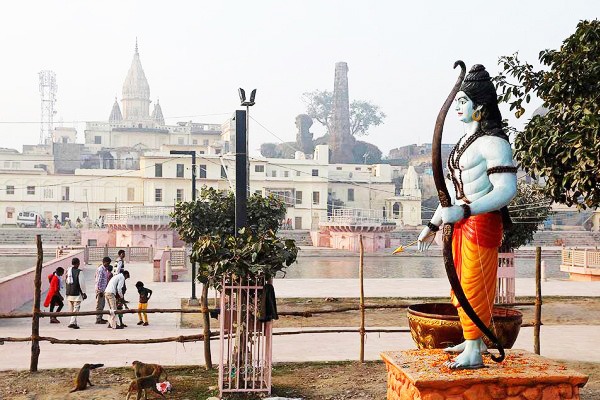
Uttar Pradesh is India’s most populated state, boasting a population of nearly 20 crore as per the 2011 Census. Of this, 15.51 crore reside in rural regions, while 4.45 crore live in urban areas. From 2001 to 2011, the urban population grew by approximately 1.09 crore, indicating that 16.50% of India’s total population and 11.80% of its urban populace are in Uttar Pradesh.
The state of Uttar Pradesh is experiencing an unprecedented rate of urbanisation. Cities are expanding, and new urban centres are emerging. According to recent government data, the urban population in the state has seen a surge of more than 20 per cent over the last decade. While this brings opportunities, it also presents challenges in infrastructure, housing, and sustainability.

The state is home to 648 of India’s 4041 towns, accounting for 16% of the total. The urban population’s proportion to the state’s total increased from 20.78% in 2001 to 22.28% in 2011, a rise of 1.5%. However, Uttar Pradesh’s urbanisation rate of 22.28% lags behind the national average of 31.16%. The urban population’s growth rate was 28.75% from 2001-2011, slightly lower than the 31.80% from 1991-2001. Despite having the most extensive urban system in India with 630 municipalities, Uttar Pradesh ranks 23rd in urbanisation. There’s a noticeable disparity in urbanisation levels across the state. The Western Region is the most urbanised at 32.45%, while the Eastern Region is the least at 13.40%. The Central and Bundelkhand Regions have urban populations of 20.06% and 22.74% respectively. This population concentration in big cities suggests a focus on job opportunities in these areas. Conversely, smaller towns are seeing a decline in growth, indicating a population shift towards cities with populations over 5 lakh.

Urbanisation in Uttar Pradesh is essential for rapid and inclusive growth as urban areas, with their dense economic activities, offer better economic efficiency and more livelihood opportunities. They provide more entrepreneurial and employment chances than scattered rural regions. In essence, urbanisation in Uttar Pradesh is a catalyst for economic growth, benefiting a broader segment of the population.

Sustainable Township: The Future of Urban Living

Urbanisation is closely linked to development and often propels economic progress. VISION 2030 document of the Government of Uttar Pradesh commits to the fulfilment of the Sustainable Development Goals (SDG). It is indeed a shared dream and a vision for a common destination – a more sustainable resource base for the next generation and a more equitable society.
With more people coming to cities, the state government wants to make life better. They are focusing on improving city transportation, like making the metro bigger. The metro projects in Lucknow and Agra will make it easier to move around in the cities. The government is also working to make cities more comfortable to live in with plans like AMRUT 2.0 to ensure cities have good services. New roads that connect big cities are also being constructed. Expressways, such as the ones between Lucknow & Agra, Lucknow & Varanasi, and Delhi & Bundelkhand, are helping people travel faster and connecting different cities.

Even in the countryside, things are changing. The state government has a plan called Jal Jeevan Mission to provide people with clean tap water that’s succeeded in making it reach 54 per cent of the population. The government doesn’t just want new cities; they also want villages to have city-like services.
According to the smart city ranking of 2022 released by the Ministry of Housing and Urban Affairs, Varanasi, occupying the third place, is the top-ranking smart city in Uttar Pradesh. Of the 10 smart cities in Uttar Pradesh, 5 cities hold spots within the top 20. Recently, the Uttar Pradesh Government announced that 10 smart cities in the state will receive Rs 10,000 crore for completing projects.
Affordable Housing: A Roof for All
Affordable housing especially to the urban poor is a social obligation of the State and a big challenge which requires innovative thinking and planning. Uttar Pradesh Avas Vikas Parishad, the state nodal housing
development authority, is excited about the state’s growth journey. Their aim is for the state to become a $1 trillion economy for which developing cities is crucial. The housing and urban planning team is working on a plan to involve both the government and private companies in making cities better.
We’re ensuring that green areas are not developed out as a part of the city, but rather cities are developed as part of green areas,” said Shri Ranvir Prasad (IAS), Commissioner, UP Avas Vikas Parishad
Investment and cities go together. During the Uttar Pradesh Global Investors Summit held in March this year, the state government got proposals for projects worth 1.8 lakh crore in housing. About 70-80,000 crore worth of these projects are now coming to life.
Clean Technologies
Energy demand has been increasing steadily along with the development of the state. In view of limited conventional energy sources and their limited exploitation and increasing environmental pollution, production of energy based on new and renewable energy sources is being given high priority and promotion. Work in the State is being carried out towards grid connected Solar Power Generation and rooftop power generation.

The Uttar Pradesh New and Renewable Energy Development Agency (UPNEDA) has been designated as the nodal agency for the implementation of the Uttar Pradesh Solar Energy Policy-2022. Various initiatives are being planned to ensure the successful implementation of the policy. The policy aims to achieve the implementation of 22,000 MW by 2026-2027, with 6,000 MW targeted through the deployment of Solar Rooftop systems in the residential sector and on government offices, buildings, organisations, and industrial buildings.
As majority of Solar Power projects, due to availability of barren and wastelands, are expected to come up in Bundelkhand region of the State. Keeping this in view, the constraints of existence of the Transmission system for evacuation of Power, a Green energy Corridor capacity for evacuation of 4000 MW Power is approved for construction in Bundelkhand Region. First phase of the Green Energy Corridor of 1000 MW capacity is targeted to be completed by 2027-2028.” – Anupam Shukla (IAS), Special Secretary, Additional Sources of Energy and Managing Director, UPNEDA, Govt of Uttar Pradesh
Additionally, as part of the efforts to ensure the effective adoption of Solar Rooftops, 16 Nagar Nigams and the city of Noida will be developed as Solar cities. Within these Solar cities, approximately 1,350,000 houses are expected to be equipped with Solar Rooftop systems over the duration of the Policy period.
Lucknow Metro
The Lucknow Metro has set a benchmark among other metros across the country with the successful implementation of the Mass Rapid Transit system (MRTS). The people of Lucknow are already utilising the Metro in large numbers, especially in congested areas like Charbagh, Singar Nagar, Krishna Nagar, Munshipulia, Hazratganj, etc. A significant advantage of Lucknow Metro is its connectivity to the Airport, Railway Station, and Bus Stand, including CCS Airport, Charbagh Railway Station, Alambagh Bus Stand, along with the ‘CCS Airport to Munshipulia’ stretch, facilitating seamless inter-state mobility.

Lucknow Metro has installed a total of 1.032 MW of solar panels across the Transport Nagar Metro Depot and Administrative Building. Additionally, 2 MW of solar panels on the roofs of metro stations are planned and expected to be implemented soon. This initiative will result in saving lakhs on electricity bills, which are charged at commercial rates.
In addition to these solar initiatives, Lucknow Metro has implemented several energy conservation measures. These include the use of regenerative braking in trains, resulting in a saving of 30 to 35 percent of traction energy. Recently, UPMRC also participated in the Energy Exchange Program, becoming the second Metro in India to do so. This has resulted in saving around Rs 10 lakhs worth of energy per month.
The Lucknow Metro in India is a pioneer in using 100% LED lights on its trains and stations. They also use special roof sheets to let in natural light and panels to reduce heat and improve ventilation. This shows their commitment to being eco-friendly.
Also Read | Uttar Pradesh’s Pursuit of Sustainable Urbanisation
They’ve also come up with a smart way to save energy on escalators. After 3 minutes of no use, the escalators slow down, and after 6 minutes, they stop completely. This saves a lot of energy, around 2.32 lakh KWh. At night, they only use specific lights for maintenance on the tracks, which saves about 0.43 lakh KWh of energy every year.
Ayodhya Where History Breathes In Modern Style
Yogi Adityanath, the Chief Minister of Uttar Pradesh, is wholeheartedly leading the efforts to transform Ayodhya into a globally recognised metropolis. With an ambitious goal of completing all projects by end of 2023, aligning with the expected opening of the temple’s inner sanctum, the government has instructed its officials to expedite their actions. Furthermore, Chief Minister Adityanath envisions the evolution of Ayodhya into an environmentally friendly hub. This forward-thinking strategy involves introducing electric vehicles at the city’s entrances to provide seamless transportation for temple devotees. To enhance convenience, comprehensive parking and multi-level parking facilities will be incorporated along the main routes.

Concurrently, there are grand ambitions for a monumental 200-foot tall statue of Lord Rama, poised to adorn the banks of the Saryu river. In addition, an innovative digital museum centred around the theme of Ram is in progress to boost tourism. As a potential improvement, the consideration of a ropeway system aims to enhance accessibility in the upcoming solar city.
This transformation ushers in the era of “Navya Ayodhya,” as this profound shift encompasses the development of a modern railway station, an international airport, and well-connected extensive roadways, positioning Ayodhya as a prominent tourist destination within the nation.
Further, the Ayodhya Township is set to become the first planned green and blue infrastructure, a concept where green spaces are established before the plots and the city itself.
Significantly, the ongoing construction of the Ram Mandir holds great importance, given Ayodhya’s status as Lord Rama’s birthplace. Termed “Navya Ayodhya,” this expansion effort encompasses a sprawling 1500-acre township designed as a harmonious and Vastu-compliant Vedic City. This visionary project includes guest houses representing various Indian states, as well as accommodations for five different countries, adding to the city’s charm.
Infrastructure Development
Uttar Pradesh is the state with the maximum number of expressways in India (out of 13, 6 are active, and 7 are under construction). It has 3 international airports that are functional, and 2 are under construction. It also has 9 airports connected to 50 destinations. Five cities have metros (earlier there was only 1). India’s first RRTS (Regional Rapid Transport System) will start in December.

The state government has ensured great connectivity all across through national highways and India’s first waterway – Inland Waterways – also being in Uttar Pradesh. The state also has a logistics hub in Greater Noida. All these projects are helping UP realise the dream of a $1 trillion economy. One of the two defence corridors in India is in Uttar Pradesh. 45 percent of Indian mobiles are manufactured, and 55 percent of mobile parts are made in Uttar Pradesh. It is soon going to become the hub of data centres. At the Global Investor Summit, the state received 33 lakh crore for Infrastructure development plan.
The Road Ahead
Uttar Pradesh is at a pivotal juncture. With the right policies, investments, and a focus on sustainability, the state can set a benchmark for urban development in India. The upcoming Uttar Pradesh Investment & Planning Conclave and government initiatives are steps in the right direction, ensuring that the urban evolution of Uttar Pradesh is both inclusive and sustainable.
Both the state and central government are working towards transforming Uttar Pradesh to make the nation truly become future-ready.
Be a part of Elets Collaborative Initiatives. Join Us for Upcoming Events and explore business opportunities. Like us on Facebook , connect with us on LinkedIn and follow us on Twitter, Instagram.
"Exciting news! Elets technomedia is now on WhatsApp Channels Subscribe today by clicking the link and stay updated with the latest insights!" Click here!













